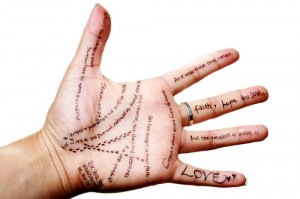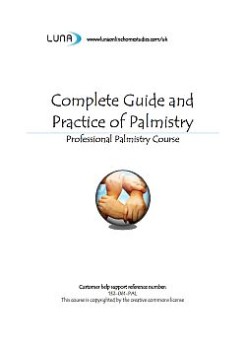Understanding Palmistry
Published on 14 September, 2010 | Accreditation
Learn how to read palms with this professional accredited Palmistry course

In this course you will learn about the different hand shapes the Mounts the major and minor lines among other things. This course will give you the firm basics, and a good all round knowledge of palmistry. The course will be in 3 parts comprising of 3 lessons in each section.
History of Palmistry
It is thought that Palmistry began in India and first spread to China and Japan, arriving in Europe from India with the Gypsies in the 14th century, where they combined their clairvoyance with their knowledge of Palmistry.
Palmistry details both your past and your future; everything major that has happened in your life will be in your hands. The dominant hand (the one you write with) describes events that have been, and what you can expect in the future. The non-dominant hand shows your potential and the things you wish for. But remember these lines can change over time.
This is a comprehensive course, hence its title, when students have successfully completed the course and their examination they can begin to practice professionally as a Palmistry Reader. This course is a must if you are new to the subject of Palm Reading or want to improve your skills.
Part 1
Lessons 1 begins with the history of Palmistry, and introduces the different hand shapes, which includes the Earth Hand, the Air Hand, the Fire Hand and finally the Water Hand and what indicates a person and their fundamental personality.
Lesson 2 continues with explaining the different Mounts of the Hand, how they can look different on an individual and their meanings.
Lesson 3 concludes with an explanation of the fingers, thumb nails and phalanges which again further characterise an individual’s personality.
Part 2
Lesson 4 explains the principal lines of the hand, their quality, where the lines end and begin, the shapes, colours, rising lines and all of their meanings. This lesson also includes the definition of the Life Line, calculation of the different times of life which is essential to the art of a Professional Palmist.
Lesson 5 continues with the definition of the Head Line, again the quality, length and the shape of the line and finally the lines of interference which further describes an individual’s character.
Lesson 6 concludes with the definitions of the Heart Line which is the emotional part of the makeup of a person and Fate Line which deals with careers and the path that a person can take..
Part 3
Lesson 7 begins with Minor Lines of the Hand, including the Medical Stigmata, the Lines of Marriage, the Line of Mercury, the Bracelets of Neptune, the Ring of Saturn, the Ring of Solomon, the Girdle of Venus, the Lines of Mars and finally the Line of Apollo which further describe an individual’s personality and can also help them with their future choices and direction.
Lesson 8 introduces the Crosses, Squares and Other Signs which are numerous, but again help guide the individual in their future. Finally there is an exercise for students to practice their new learnt skills in Palmistry and consolidate what they have read.
Learning Review
After Part 1 and 2 of this course there are related questions and answers that allow the students to review what they have learnt.
Enrol today: palmistry diploma course



